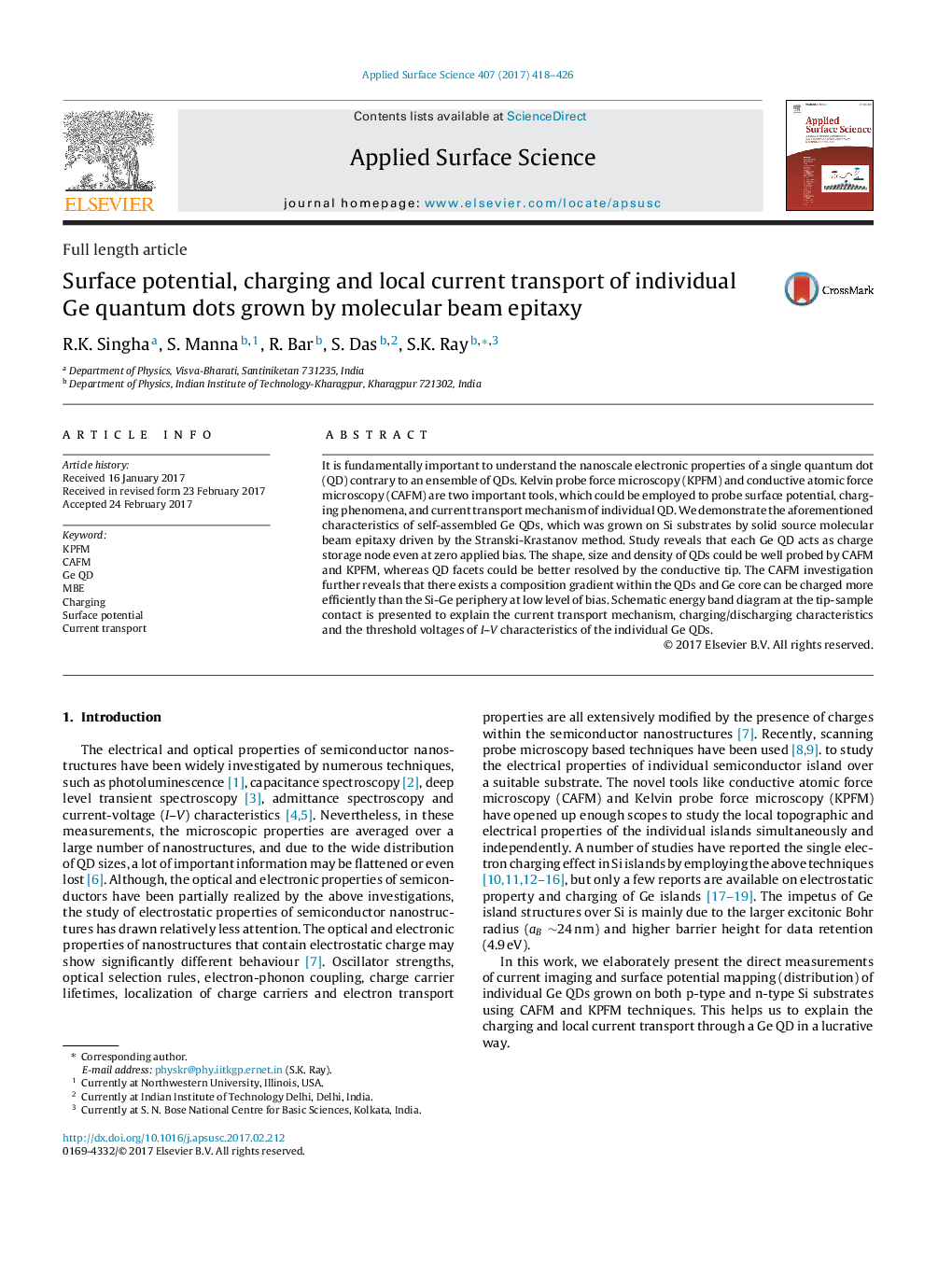| Article ID | Journal | Published Year | Pages | File Type |
|---|---|---|---|---|
| 5351467 | Applied Surface Science | 2017 | 9 Pages |
Abstract
It is fundamentally important to understand the nanoscale electronic properties of a single quantum dot (QD) contrary to an ensemble of QDs. Kelvin probe force microscopy (KPFM) and conductive atomic force microscopy (CAFM) are two important tools, which could be employed to probe surface potential, charging phenomena, and current transport mechanism of individual QD. We demonstrate the aforementioned characteristics of self-assembled Ge QDs, which was grown on Si substrates by solid source molecular beam epitaxy driven by the Stranski-Krastanov method. Study reveals that each Ge QD acts as charge storage node even at zero applied bias. The shape, size and density of QDs could be well probed by CAFM and KPFM, whereas QD facets could be better resolved by the conductive tip. The CAFM investigation further reveals that there exists a composition gradient within the QDs and Ge core can be charged more efficiently than the Si-Ge periphery at low level of bias. Schematic energy band diagram at the tip-sample contact is presented to explain the current transport mechanism, charging/discharging characteristics and the threshold voltages of I-V characteristics of the individual Ge QDs.
Related Topics
Physical Sciences and Engineering
Chemistry
Physical and Theoretical Chemistry
Authors
R.K. Singha, S. Manna, R. Bar, S. Das, S.K. Ray,
